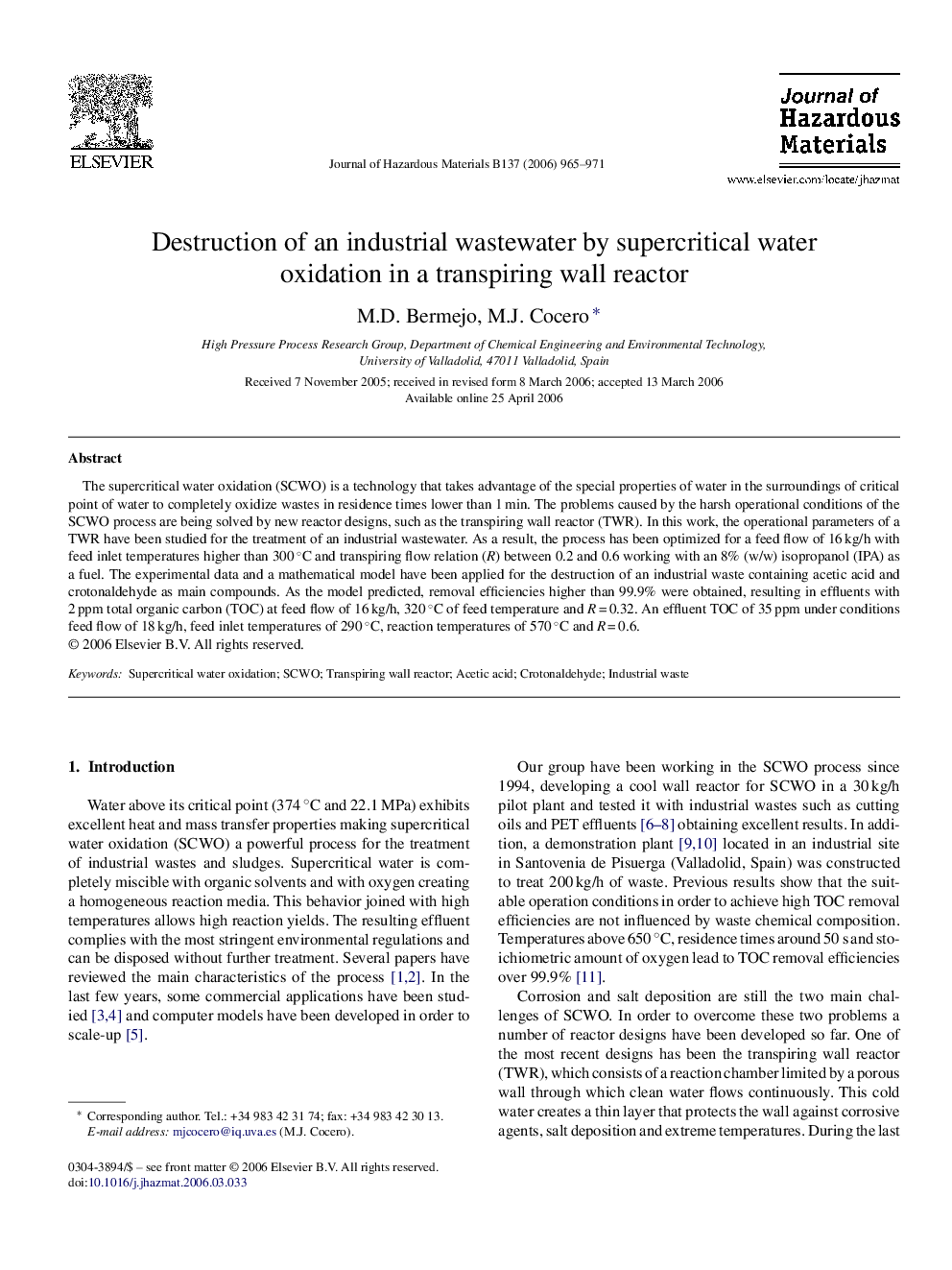| Article ID | Journal | Published Year | Pages | File Type |
|---|---|---|---|---|
| 585342 | Journal of Hazardous Materials | 2006 | 7 Pages |
Abstract
The supercritical water oxidation (SCWO) is a technology that takes advantage of the special properties of water in the surroundings of critical point of water to completely oxidize wastes in residence times lower than 1 min. The problems caused by the harsh operational conditions of the SCWO process are being solved by new reactor designs, such as the transpiring wall reactor (TWR). In this work, the operational parameters of a TWR have been studied for the treatment of an industrial wastewater. As a result, the process has been optimized for a feed flow of 16 kg/h with feed inlet temperatures higher than 300 °C and transpiring flow relation (R) between 0.2 and 0.6 working with an 8% (w/w) isopropanol (IPA) as a fuel. The experimental data and a mathematical model have been applied for the destruction of an industrial waste containing acetic acid and crotonaldehyde as main compounds. As the model predicted, removal efficiencies higher than 99.9% were obtained, resulting in effluents with 2 ppm total organic carbon (TOC) at feed flow of 16 kg/h, 320 °C of feed temperature and R = 0.32. An effluent TOC of 35 ppm under conditions feed flow of 18 kg/h, feed inlet temperatures of 290 °C, reaction temperatures of 570 °C and R = 0.6.
Keywords
Related Topics
Physical Sciences and Engineering
Chemical Engineering
Chemical Health and Safety
Authors
M.D. Bermejo, M.J. Cocero,
